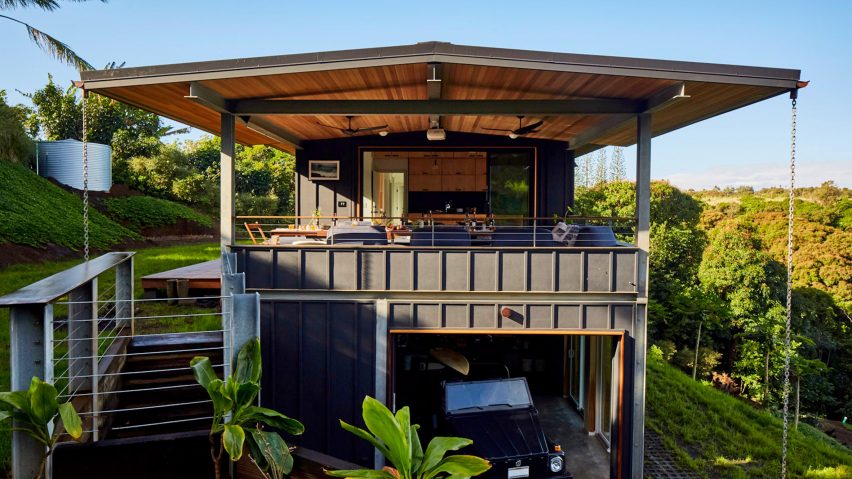
Hawaiian house by LifeEdited harvests more energy and water than it consumes
Design consultancy LifeEdited has built a family home on Hawaiian island Maui, as a model for sustainable, off-grid living.

The LifeEdited: Maui residence was completed last year to showcase methods of constructing, furnishing and running a house with as little environmental impact as possible.
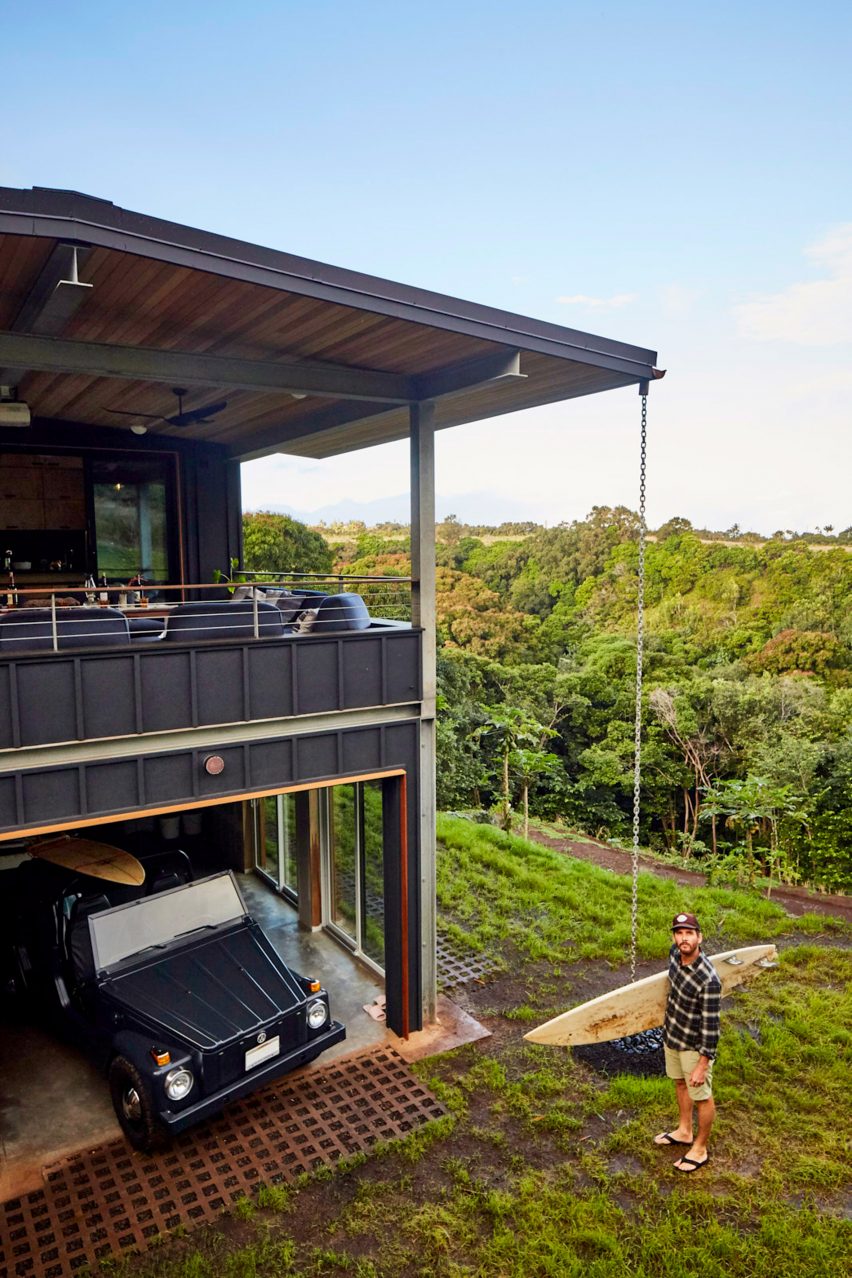
The black building is entirely self-sufficient, boasting a combination of design and technology features that save and produce energy, and collect and store rainwater.
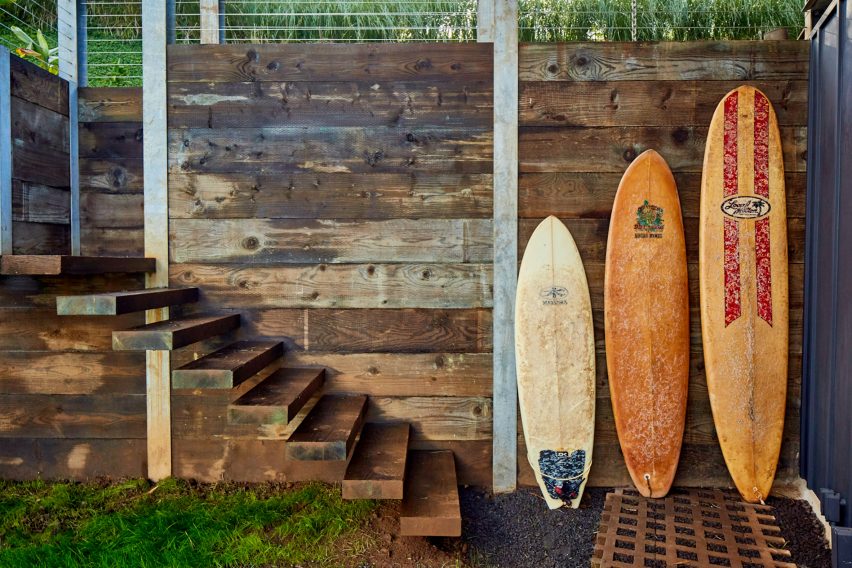
"We are presenting a vision of the future that is sustainable, resilient and frankly, awesome," said LifeEdited founder Graham Hill.
"With as much as 70 per cent of global carbon emissions tied to constructing, operating and furnishing buildings, the project is a firsthand representation of how we can reshape our future, starting with life at home."
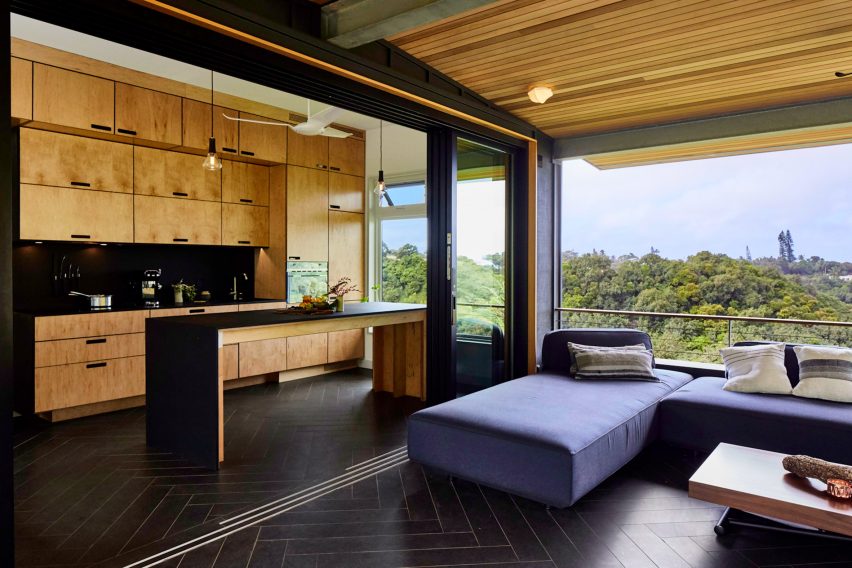
The two-storey house sits on a steep remote site. Measuring 1,000 square feet (93 square metres), its flexible layout includes four bedrooms, two and a half bathrooms, and an indoor-outdoor area for cooking, eating, working and relaxing.
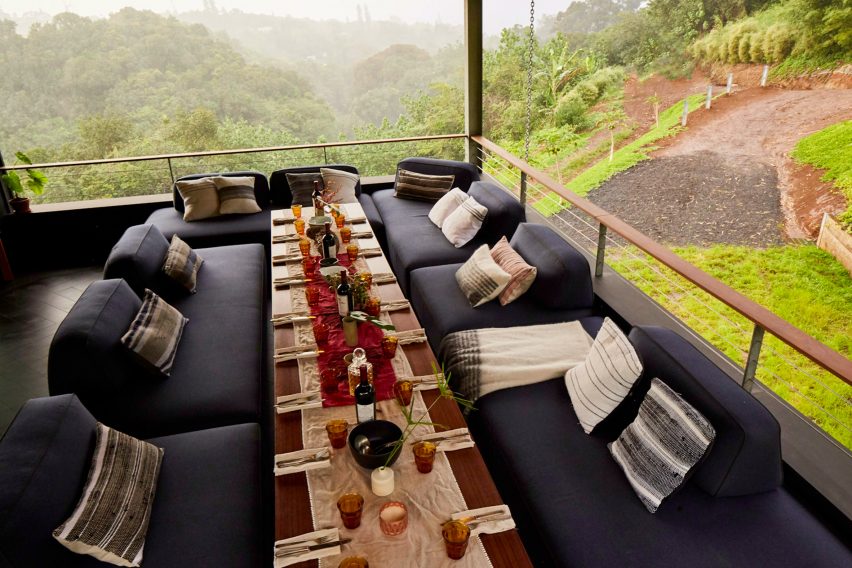
All of the living space is located on the upper level, while a garage and storage facilities are housed underneath.
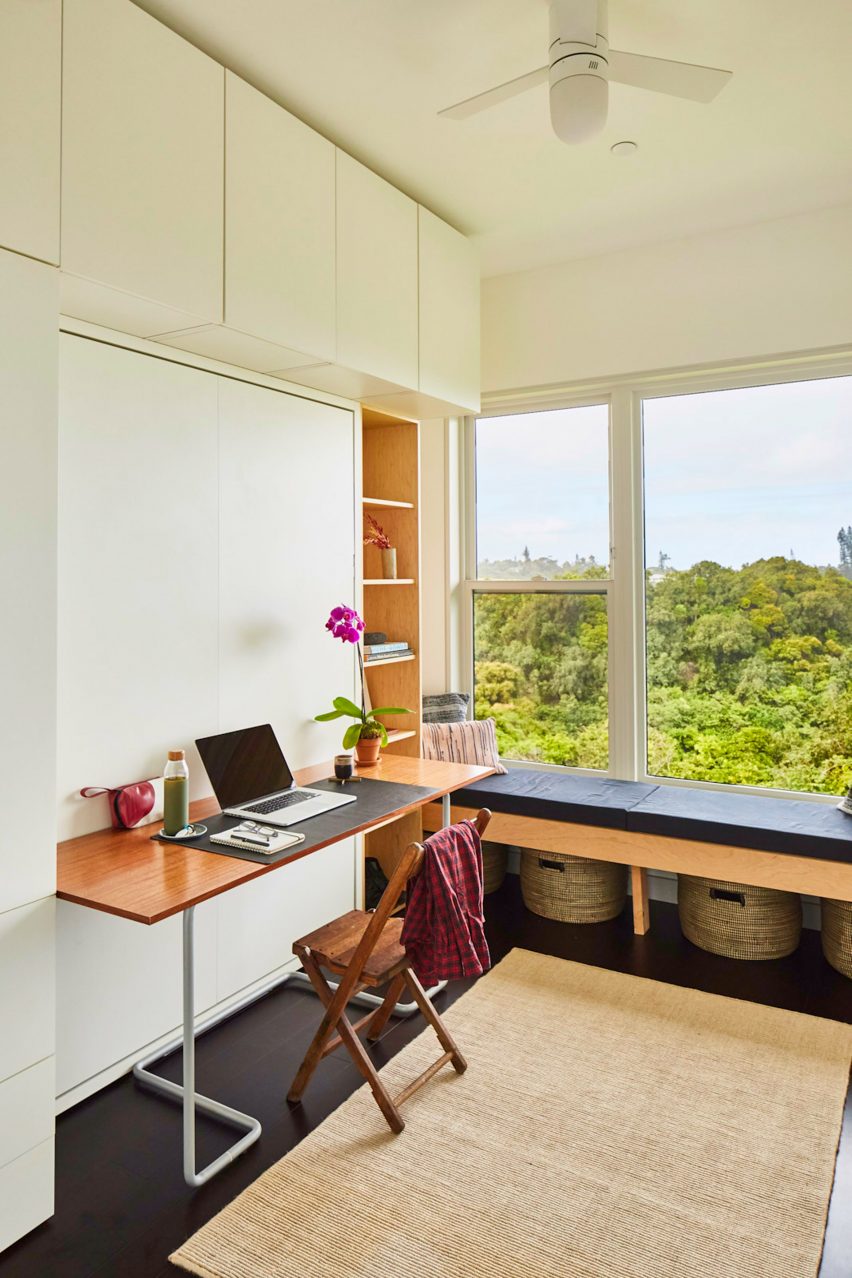
Space-saving furniture in the lounge and bedrooms allows the areas to be used for different functions, depending on the occupants. LifeEdited said the home is capable of entertaining up to 20 people.
The house is outfitted with efficient LED lights and a low-energy air-conditioning system. Windows and sliding doors are made from a high-performance composite called Fibrex, while tiles are partially composed of recycled materials.
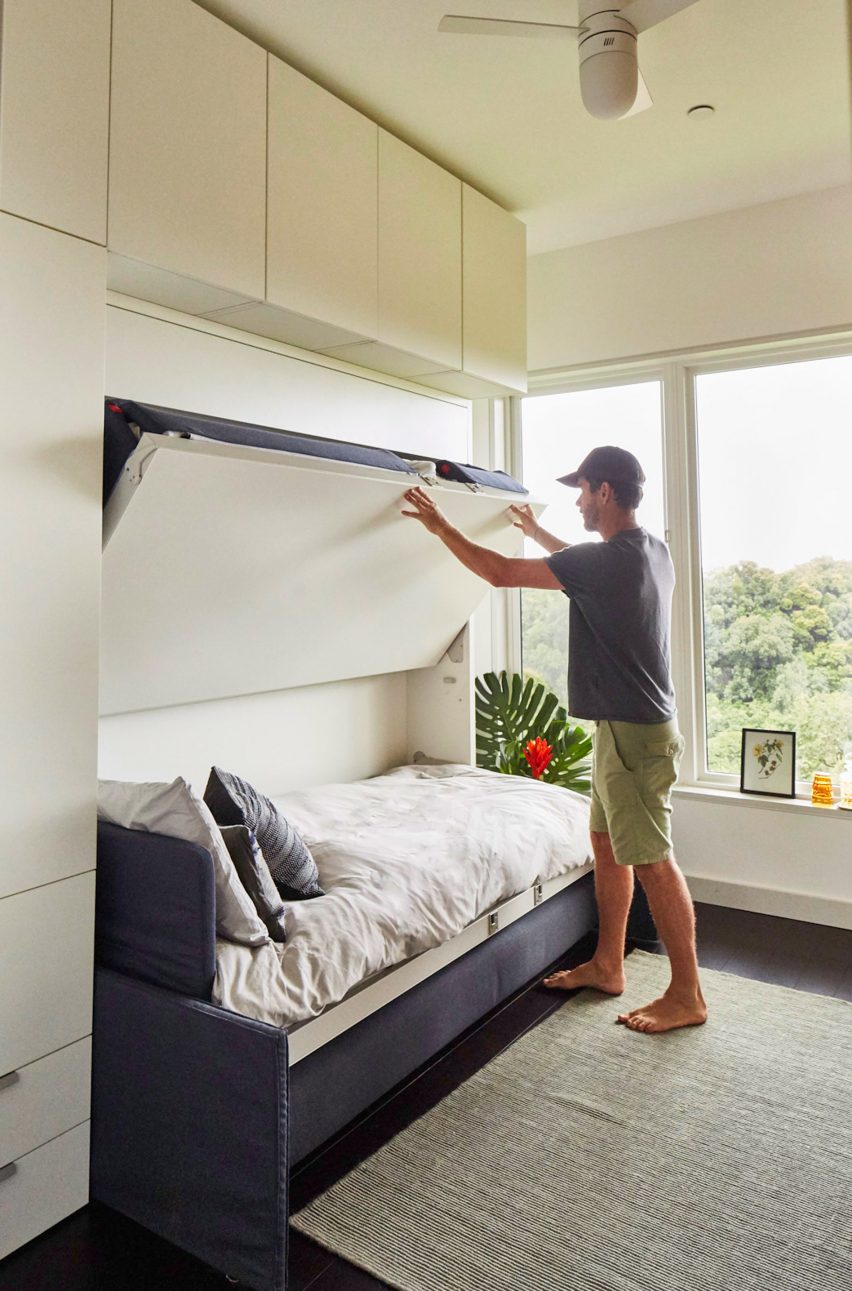
Thin solar panels cover the gently pitched roof, collecting 10,550 watts of power to supply everything in the house, and charging a 1973 Volkswagen Thing that has been converted to electric. A Blue Ion 2.0 Energy Storage System in the garage acts as a battery.

Rainwater is collected from the roof via chains at each corner, filtered on-site and stored in a tank close to the home.
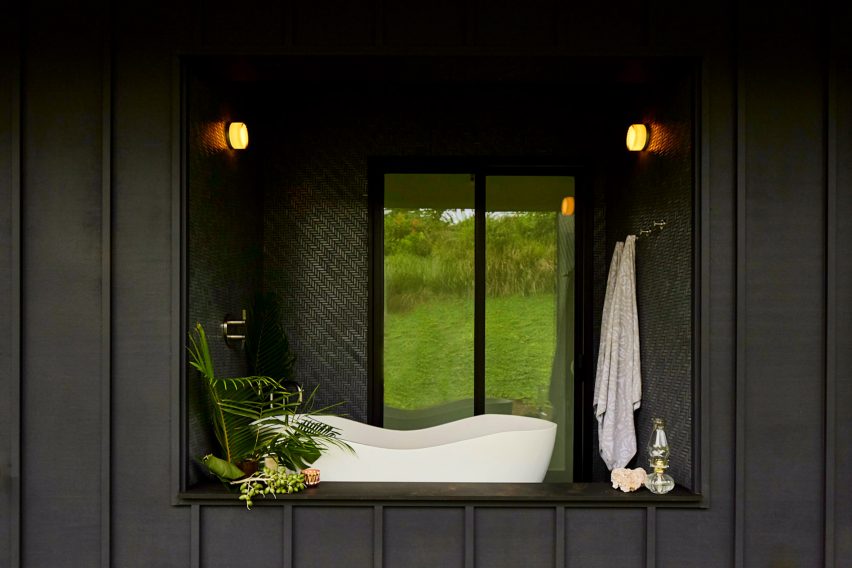
LifeEdited: Maui is designed to comply with the Hawaii Clean Energy Initiative, which aims to implement 100 per cent clean energy across the island chain by 2045.
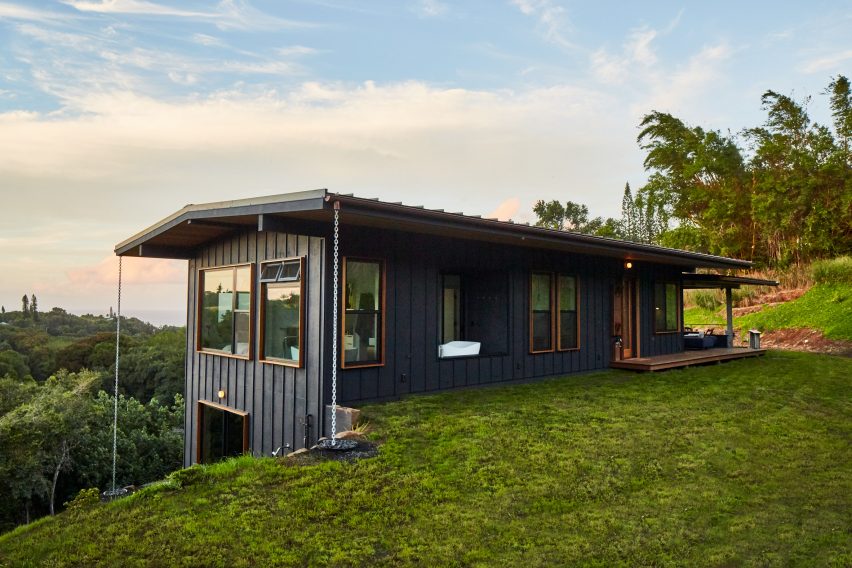
The second largest of the Hawaiian islands, Maui is a popular location for holidaymakers, second homes, and retirement retreats.
Other new houses on the island include a getaway comprising to small pavilions and a clifftop residence with a faceted concrete roof, which are both designed to make the most of the warm climate.
Photography is by Shawn Hanna.